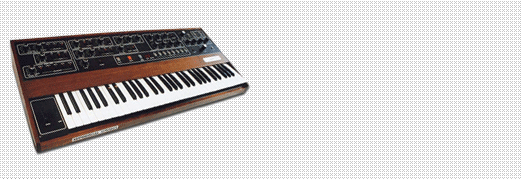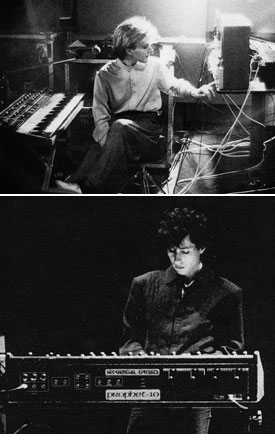
The Prophet Five
Sequential Circuits' Innovative Polysynth
The brainchild of synthesizer pioneer Dave Smith, who played a key role in the development of MIDI (Musical Instrument Digital Interface) and is arguably as influential as Bob Moog, the Prophet 5 set the mold for the modern polysynth.
Sequential Circiuts Inc.'s (SCI) first synthesizer, the Prophet 5 was released in 1978 with a price tag of $4,595 1 . It quickly caught on and SCI, which hand built the instrument out of Smith's Southern California garage, struggled to keep up with demand 2 . The Prophet 5 is billed as the first commercially viable polyphonic synthesizer, a title which may more aptly go to Yamaha's CS-80 (an absolute beast of a machine made famous by Vangelis) 3 . What set the Prophet apart, however, was its integration of a microprocessor which was integral to its five voice polyphony and data storage capabilities (40 memory banks for patches) 1. It was also considerably cheaper, and substantially more lightweight, than the $6,900, 220 pound CS-80 4 .
Over 7,000 Prophets were manufactured and the instrument was upgraded through 3 revisions (REV 1, 2 and 3) over the years 1 . Nearly every major recording artist from the late 1970s through the 1980s laid hands on a Prophet 5, and its distinctive sound pops up on recordings of all styles, types and genres 5 .

Top: Sylvian with the Prophet 5. Bottom: Barbieri and the Prophet 10. Photos by Fin Costello.
A fine example of the Prophet 5's power can be found on Japan's seminal 1981 album, "Tin Drum." The Prophet's characteristic tone is integral to the band, and it's warm-but-cool, organic-yet-synthetic sound is perfectly paired with the ideas behind the album (listen to "Ghosts," for the clearest example).
You can spot Japan behind the Prophet 5 on both their performances on the BBC's The Old Grey Whistle Test (in 1980 and 1982), their performance of, "Ghosts," on Top of the Pops in 1982, as well as in the promo video for the Sylvian & Sakamoto single, "Bamboo Music" (see the videos section of this site). You can also see them playing it live in the concert film, "Oil on Canvas," but good luck trying to make it out through the blurry fog the video was shot in. There are also a few photographs in the Fin Costello book, "Sons of Pioneers," of Japan with the Prophet 5, including one of Richard Barbieri with his Prophet 10, a somewhat rare (less than 1,000 were made), double stacked version of the Prophet 5 with a built in sequencer 1 .
SCI continued to manufacture synthesizers throughout the greater part of the 1980s, including the popular Pro-One monosynth, as well as introducing the world's first MIDI equipped synthesizer, the Prophet 600. After going out of business in 1987, Yamaha bought up what was left of the company, while Korg co-opted SCI's vector synthesis technology for their now classic Wavestation synthesizer 3 .
- "The Dave Smith Ego Museum." Dave Smith Instruments. http://www.davesmithinstruments.com/other/museum.html.
- "Sequential Circuits." Wikipedia. http://en.wikipedia.org/wiki/Sequential_Circuits.
- Coates, Brad. "Sequential Circuits Prophet-5." Synthmuseum. http://www.synthmuseum.com/magazine/0011bc.html.
- "Yamaha CS-80." Synthmusuem. http://www.synthmuseum.com/yamaha/yamcs8001.html.
- "Prophet 5 User List." Dave Smith Instruments. http://www.davesmithinstruments.com/other/user_list.html.
«Return to connection











